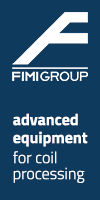Outokumpu Tornio Receives Environmental Permit Enabling Commissioning of Ferrochrome Extension
08/15/2012 - The Regional Administration of Northern Finland (PSAVI) has granted the Outokumpu Tornio site an environmental permit for its operations. The permit will enable the commissioning of the extension to the ferrochrome production capacity already under construction in the autumn of 2012 as planned.
The Regional Administration of Northern Finland (PSAVI) has granted the Outokumpu Tornio site an environmental permit for its operations. The permit will enable the commissioning of the extension to the ferrochrome production capacity already under construction in the autumn of 2012 as planned.
The investment in ferrochrome production will double the ferrochrome production capacity to 540 000 tonnes per year. The value of the entire investment is around 440 million euros, of which over 60 million euros will go into environmental investments.
The investment will be implemented using the best available technology (BAT). This will ensure Outokumpu’s position as a pioneer in environmental matters also in the coming years. Outokumpu has for two consecutive years achieved the No. 1 place in the steel industry in the Dow Jones evaluation of the environmental efforts of the 342 companies studied. These investments in environmental protection will also ensure that the BAT emissions levels are lower also in the coming years, despite increasingly stringent requirements.
In addition to fulfilling the regulations of the permit, Outokumpu is developing and constantly improving its level of environmental protection and investing in the reduction of emissions. For example, a large scale study has been launched to look into improving scrubber technology, and misting guns have been acquired to reduce diffuse dust emissions. The treatment of waste water will be improved in connection with the ferrochrome investment, and the Ferrochrome Works waste waters will in the future be almost entirely in closed circulation. All of the process waste water has been drained into the suction-dredged pool in front of the site since the summer of 2011. This arrangement has had the result of significantly reducing the loading of the sea area.



-(1)-Reinhausen-(1).jpg?lang=en-US&ext=.jpg)






